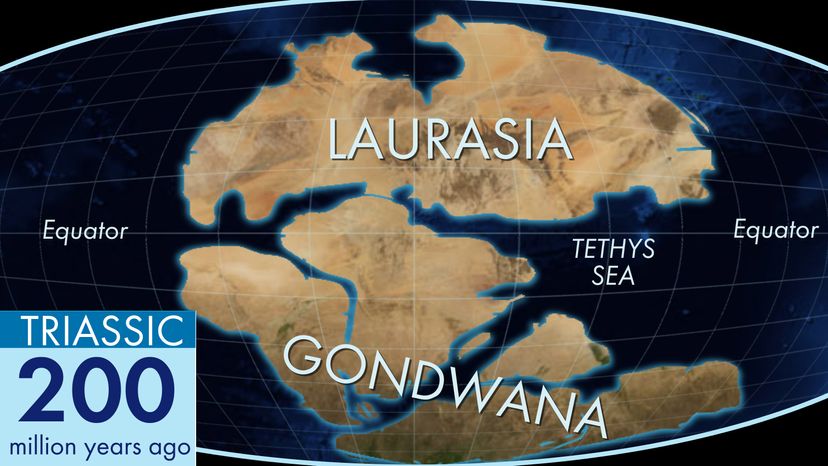
Key Takeaways
- The ancient supercontinent Gondwana formed through major mountain-building events driven by tectonic plate movements.
- Gondwana, part of the larger supercontinent Pangea, began to break apart between 280 and 200 million years ago due to tectonic activity, eventually forming the continents we recognize today.
- Hosting complex life forms from the Cambrian to the Jurassic periods, Gondwana's vast size and movement across latitudes resulted in diverse climates, contributing significantly to plant and animal evolution.
Sometimes good science can happen by just looking at a map of the world and letting your mind wander. For instance, observe how Africa and South America seem to have been very recently cuddled together, even though there are currently a couple thousand miles of ocean between them. Similarly, it doesn't take a Ph.D. to see that Madagascar fits perfectly into a little nick in the eastern edge of Africa, or that the Middle East seems to be pulling away from the top of Africa, like a corner being pulled off a hot cookie. With a reasonably good representation of the shape and arrangement of the world's continents in front of them, a third-grader could easily assess that the Earth's land masses have definitely been sneaking around.
The answer to the mystery, in case you were wondering, is Gondwanaland, also known as Gondwana.
Advertisement
"The idea of Gondwana — the agglomeration of the southern continents — arose first from a rather simple observation of the excellent jigsaw fit between South America and Africa and the similarities between flora and fauna across the continents that make up Gondwana," says Joseph Meert, a professor in the Department of Geological Sciences at the University of Florida, in an email interview.
Gondwana was an idea long before anybody figured out how or why it worked — the secret, of course, being plate tectonics, an idea that didn't really start gaining steam until the mid-20th century. But a 19th-century Austrian geologist named Eduard Seuss put a name to the concept of the supercontinent in his book "The Face of the Earth," the first volume of which was published in 1883. Seuss didn't come up with many completely novel ideas, but he did a great job of synthesizing a bunch of the research of the day to conclude that the southern continents and landmasses we now know as South America, Africa, Arabia, India, Sri Lanka and Madagascar (Australia and Antarctica would be added to the theory 30 years later), had at one point in time been connected because (1.) well, just look at them and (2.) they contained the same rocks and the same fossils from an extinct, feathery-leafed tree called Glossopteris.
Even though we now know a lot about the mechanism by which Gondwana was formed, it's extremely complicated — there's at least one peer-reviewed scientific journal devoted to the study of the supercontinent. However, here's what we're pretty certain of:
Advertisement
